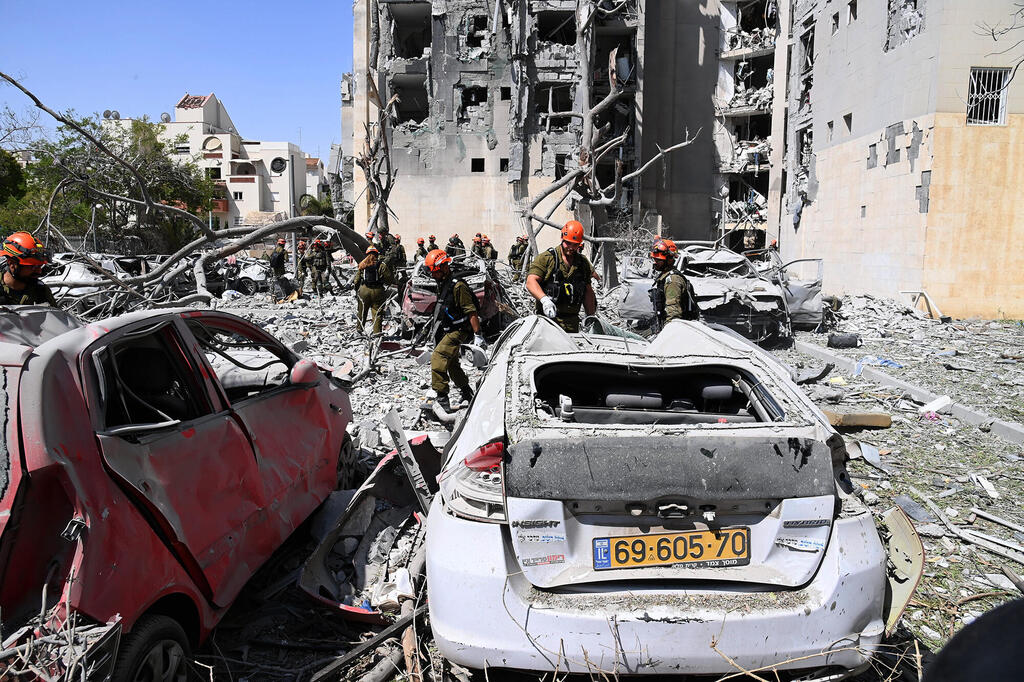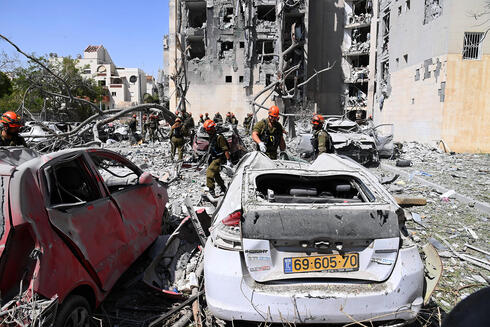
"We’ve never seen such destruction before": Israel faces over $1.3 billion in property damage from Iran war
Government scrambles to fund claims as evacuation and demolition figures mount.
The property damage sustained during the 12 days of fighting with Iran is the highest ever recorded in such a short period in Israeli history. The state is expected to pay approximately 4.5 billion shekels (approximately $1.32B) for nearly 39,000 property damage claims and the evacuation of more than 11,000 residents, and these are only partial figures. They do not yet include the damage sustained in Be’er Sheva on Tuesday or claims that have not yet been filed. The Tax Authority estimates the final cost will exceed 5 billion shekels ($1.47B), double the current cost of direct damage from the Swords of Iron War, which totals 2.6 billion shekels ($760M).
“These are challenges of a magnitude we’ve never faced in the history of Israel,” said Tax Authority Director Shai Aharonovich at a press conference on Tuesday.
“There has never been this level of damage before,” echoed Amir Dahan, head of the Israel Tax Authority's Compensation Department, who last week told Calcalist that the force of an Iranian missile fired from 300 meters is comparable to a direct hit by a Hamas rocket.
Since the start of Operation Rising Lion, 38,700 claims have been filed, most relating to structural damage. This is about half the number of claims submitted so far during the Swords of Iron War. The final number is expected to exceed 45,000. However, it’s not just the quantity of claims, it’s also the severity of the damage. While the Compensation Fund paid out 2.6 billion shekels for Swords of Iron, the current war is expected to cost twice as much.
Most claims have come from the central region:
- 25,000 claims were filed through the Tel Aviv Tax Authority, which covers the Tel Aviv metropolitan area.
- 11,000 came from the Ashkelon center, not including the recent Beersheba attacks.
- 2,800 were registered in the north.
- Only 94 were recorded in Jerusalem.
Related articles:
The scale of destruction is also reflected in the number of buildings marked for demolition: as of Tuesday, 30 buildings are scheduled for teardown, compared to just one during the Swords of Iron war.
“We’re dealing with complex, large-scale damage,” said Dahan. “Normally we see damage to a single wing or room, and demolition is rare and debated. This time, we know immediately which buildings must come down.”
As of yesterday, 11,294 residents had been evacuated from their homes, most of them relocated to hotels. The Tax Authority is funding a two-week hotel stay, with an option to extend. Alternatively, households that stay with relatives receive a 4,000-shekel payment.
Cities with the highest number of evacuees include:
- Bnei Brak and Ramat Gan: around 2,000 each
- Tel Aviv, Ness Ziona, Bat Yam, Holon: over 1,000 in each city
- Be’er Sheva: 173 evacuated so far, with nearly 1,000 homes reporting damage
The scale of destruction has prompted the public to flock to the Tax Authority’s extended contents insurance, introduced in 2007 but never widely used, until now. While only hundreds of individual policies existed before the war, more than 50,000 people purchased the expanded coverage in just 12 days.
The figures above only reflect direct physical damage, they do not include losses from the decline in economic activity. This week, the Finance Ministry announced a compensation plan for businesses estimated at 4 billion shekels.
In total, the Tax Authority’s Compensation Fund is expected to pay at least 9 billion shekels, equal to the fund’s current balance as of early June. Although the fund is expected to grow through real estate tax provisions later this year, additional large-scale damage could exceed the state’s capacity to finance compensation solely from this fund.
